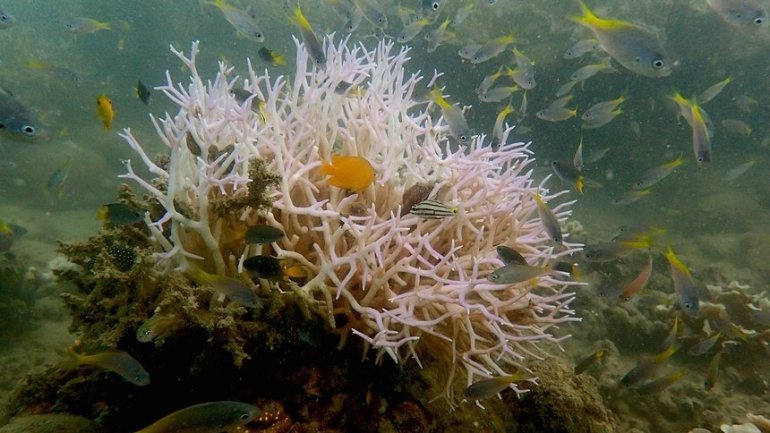Image of new bleaching on Great Barrier Reef heighten fears of coral death
 foto: theguardian.com
foto: theguardian.com
The embattled Great Barrier Reef could face yet more severe coral bleaching in the coming month, with areas badly hit by last year’s event at risk of death, as reported by The Guardian.
Images taken by local divers last week and shared exclusively with the Guardian by the Australian Marine Conservation Society show newly bleached corals discovered near Palm Island.
Most of the Great Barrier Reef has been placed on red alert for coral bleaching for the coming month by the US National Oceanic and Atmospheric Administration. Its satellite thermal maps have projected unusually warm waters off eastern Australia after an extreme heatwave just over a week ago saw land temperatures reach above 47C in parts of the country.
According to the Great Barrier Reef Marine Park Authority, sea surface temperatures from Cape Tribulation to Townsville have been up to 2C higher than normal for the time of year for more than a month.
Images taken by local divers last week and shared exclusively with the Guardian by the Australian Marine Conservation Society show newly bleached corals discovered near Palm Island.
Most of the Great Barrier Reef has been placed on red alert for coral bleaching for the coming month by the US National Oceanic and Atmospheric Administration. Its satellite thermal maps have projected unusually warm waters off eastern Australia after an extreme heatwave just over a week ago saw land temperatures reach above 47C in parts of the country.
According to the Great Barrier Reef Marine Park Authority, sea surface temperatures from Cape Tribulation to Townsville have been up to 2C higher than normal for the time of year for more than a month.
- Environmental hazard: Pollution of Dniester river water at very high level of risk
- Jellyfish wash up 'like wallpaper' on Australian beach
- New Dead Sea Scrolls cave discovered
- EU criticised over "emergency authorisations" of banned bee-harming pesticides
- Sea ice at record low in Arctic and Antarctic
- Tiny plastic pellets found on 73% of UK beaches